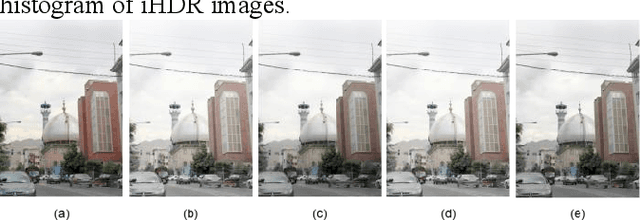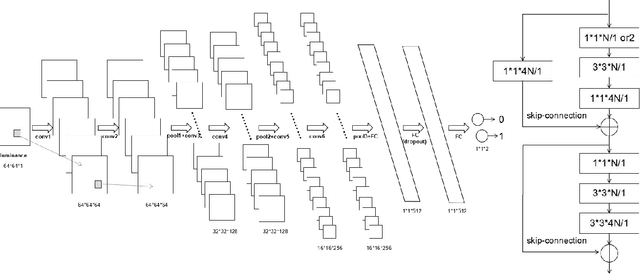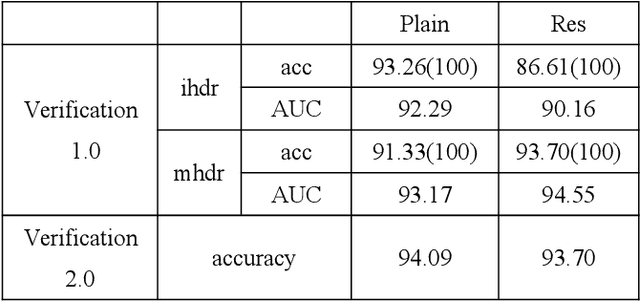Yongqing Huo
A security steganography scheme based on hdr image
Feb 28, 2019



Abstract:It is widely recognized that the image format is crucial to steganography for that each individual format has its unique properities. Nowadays, the most famous approach of digital image steganography is to combine a well-defined distortion function with efficient practical codes such as STC. And numerous researches are concentrated on spatial domain and jpeg domain. However, whether in spatial domain or jpeg domain, high payload (e.g., 0.5 bit per pixel) is not secure enough. In this paper, we propose a novel adaptive steganography scheme based on 32-bit HDR (High dynamic range) format and Norm IEEE 754. Experiments show that the steganographic method can achieve satisfactory security under payload from 0.3bpp to 0.5bpp.
High dynamic range image forensics using cnn
Feb 28, 2019



Abstract:High dynamic range (HDR) imaging has recently drawn much attention in multimedia community. In this paper, we proposed a HDR image forensics method based on convolutional neural network (CNN).To our best knowledge, this is the first time to apply deep learning method on HDR image forensics. The proposed algorithm uses CNN to distinguish HDR images generated by multiple low dynamic range (LDR) images from that expanded by single LDR image using inverse tone mapping (iTM). To do this, we learn the change of statistical characteristics extracted by the proposed CNN architectures and classify two kinds of HDR images. Comparision results with some traditional statistical characteristics shows efficiency of the proposed method in HDR image source identification.
 Add to Chrome
Add to Chrome Add to Firefox
Add to Firefox Add to Edge
Add to Edge